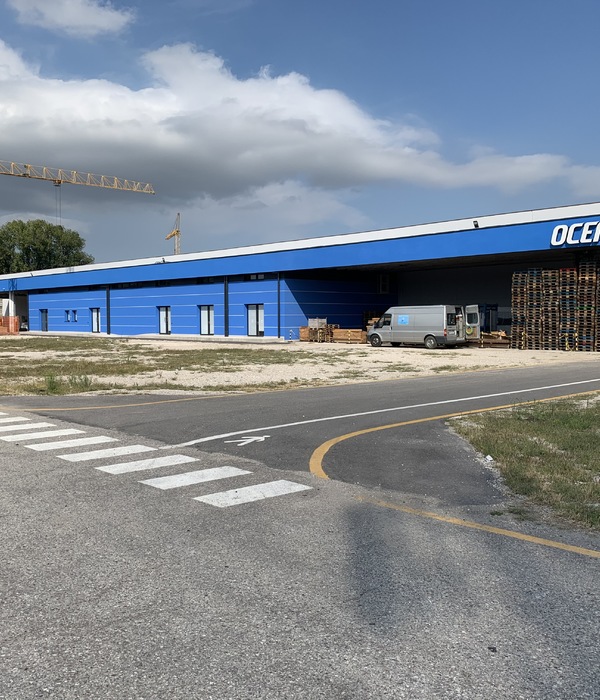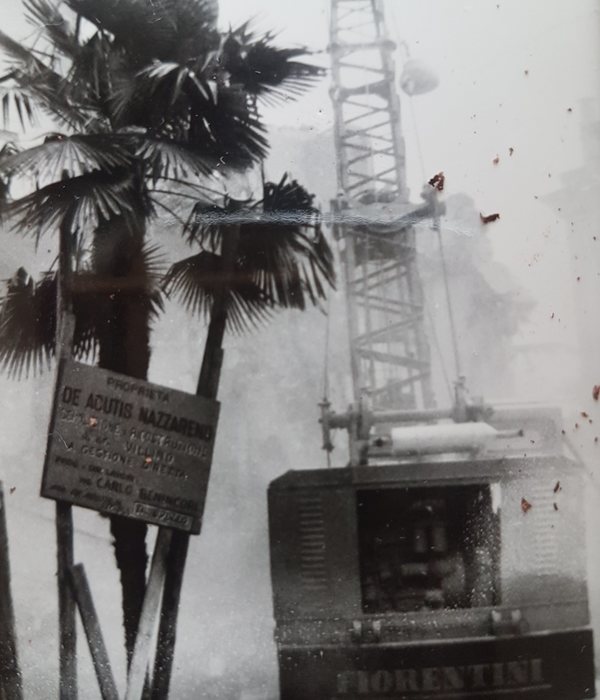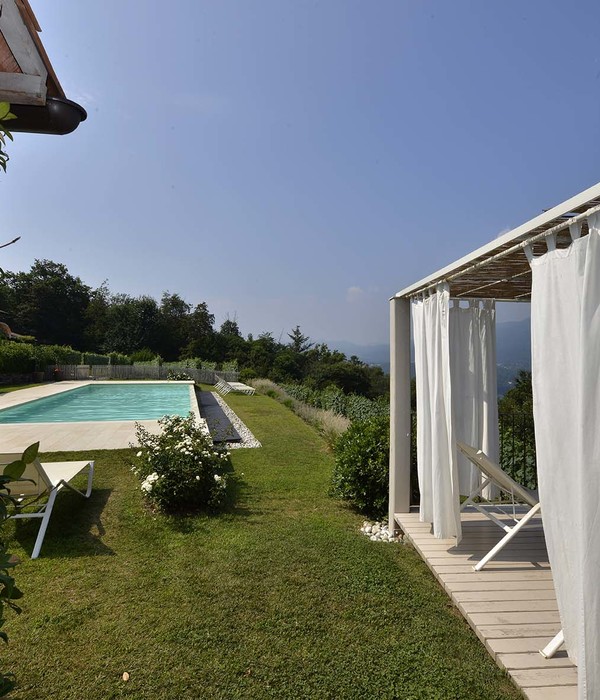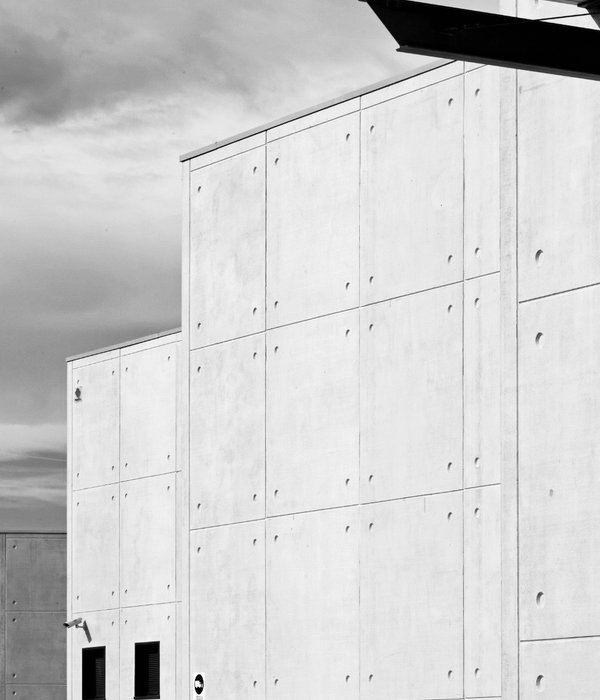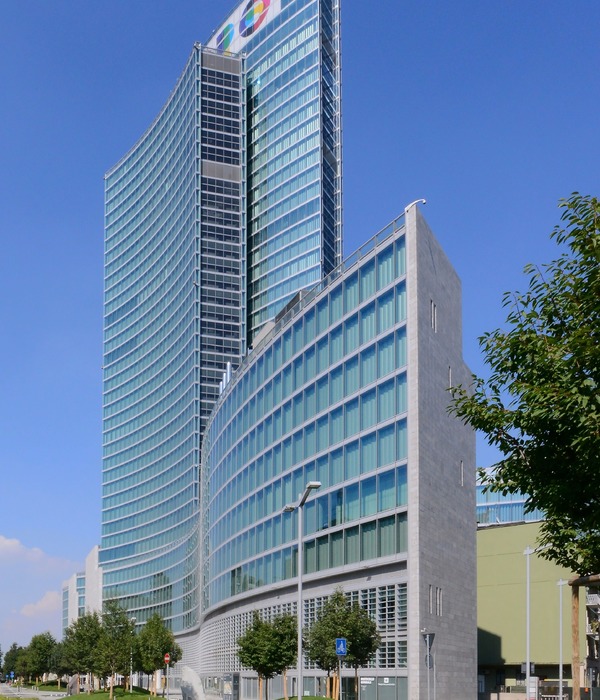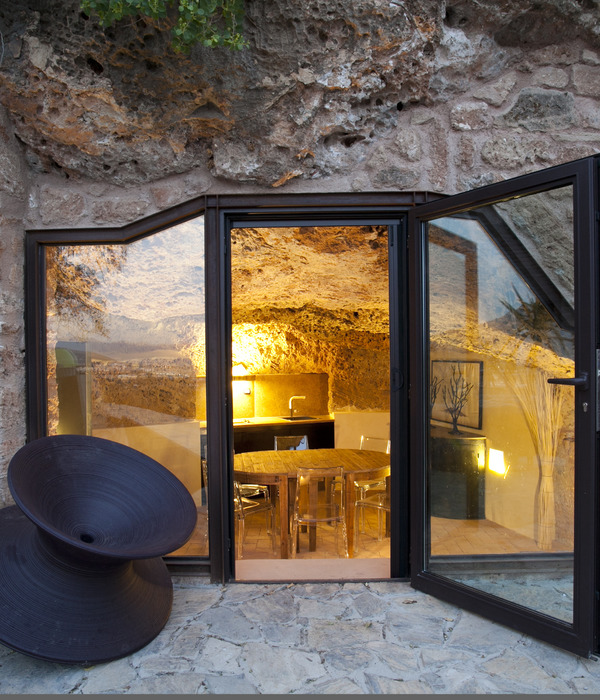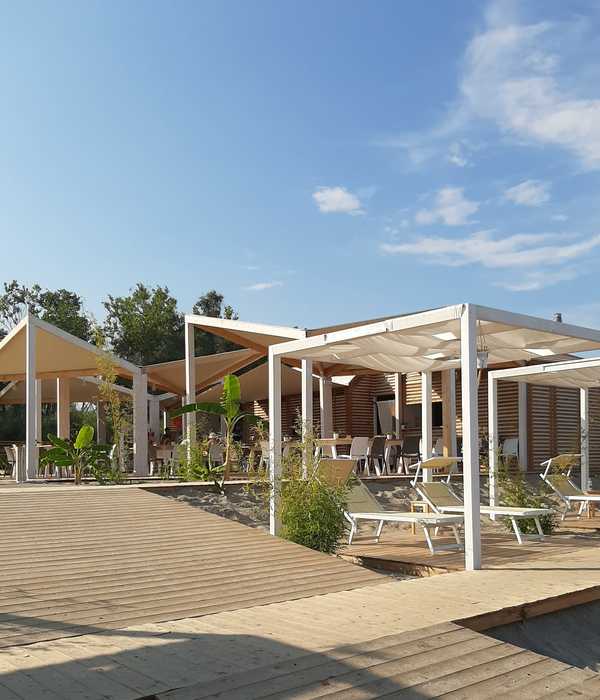▲左:粉色西洋蓍草;中:丛林丝兰;右:菊科飞蓬属小雏菊,Left: Island Pink Yarrow, middle: Our Lord’s Candle. Right: Beach Aster.
Often buildings are placed where the garden should be. The success of this project stems from the opposite approach. Instead, a generous courtyard garden protected from freeway noise, wind and other discomforts replaces an abandoned asbestos-contaminated building, while featuring views to the surrounding foothills. The long, narrow building, placed at the edges of the site, maximizes interior access to natural light and ventilation while creating space for patios and planted terraces for working, meeting, and recreation for the entire government campus.
The experience of the building begins in a garden, with entrance through the verdant courtyard, defined on the south and west by the building, and on the north and east with generous stairs and an arcing access ramp. Art, landscape, and architecture overlap (and share budgets) to achieve as much as possible for the people who work here. Outdoor workstations (with power and data), occupiable artwork, and native landscape interact in a peaceful garden for work, collaboration and recreation.
The design team collaborated closely to employ many other strategies to incorporate eco-effective landscape features that minimize additional cost while creating poetic, productive and economical space:
Planting And Passive Climate Modification
A dramatic preserved Oak defines the courtyard with other regionally native plant materials adapted to local rainfall, creating habitat for birds and other small animals, as well as people.
Technical day-lighting studies, performed collaboratively with Southern California Edison, tested design options for passive climate modification. This work informed the design of the dramatic 330′ long trellis of shade fabric and flowering wisteria that defines a green identity for Casa Nueva as seen from the adjacent major highway. The planted trellis and fabric shield the south and west from seasonal heat gain to improve employee comfort and energy performance. In early spring, this ‘green’ building turns lavender with Wisteria blossoms. In autumn, the vertical trellises lining the courtyard facade, planted with native grape vines, cover the building with startlingly red fall foliage. When the building is described to visitors they have been known to ask, “Do you mean the one along the highway that looks like a treehouse?”
Stormwater Management
A bio-swale, lush with native grasses, runs through the courtyard, treating and filtering storm-water runoff before feeding into an artist created cistern. A detention basin stores storm water under the parking lot, and permeable paving reduces peak storm water flow.
Materials
Simple, affordable, and easy to use materials were used that are durable and non-toxic as well. Whenever possible, materials were left unfinished or exposed. Simple materials include shade fabric panels constructed from #2 recyclable plastic with supporting trellises made of telephone poles, and unfinished locally made concrete block retaining walls with fly ash content.
Art
The regional Art in Public Places Committee supported the selection of an artist to be included on the design team. As frequent past collaborators, the artist, architect and landscape architect made the most the art component, investing all of the art into the landscape to provide unique texture and form to standard site elements such as seat walls, retaining walls and special areas of paving.
Transportation
The building’s location along public transportation lines, including local and regional Express buses, provides convenient commuting options. A garden structure to house and protect bicycles augments the showers provided in the building for bicycle commuters. Two electric vehicle-charging stations are provided for Air Pollution Control fleet vehicles.
Maintenance
‘Healing Grounds’, an adjacent rehabilitation center in the business of propagating organic herbs and compost tea for sale, adopted a portion of the landscape to demonstrate the effectiveness of their organic methods over typical contract maintenance services. The plants in their adopted portion became conspicuously more vital than elsewhere.
Conclusion
This ‘infill’ model office building on an existing campus of 1800 employees creates the first and only outdoor gathering spaces within walking distance. The project features environmentally sensitive design, realized within a conventional budget, as a model for all future County of Santa Barbara design and construction projects. Case Nueva reflects the values and goals of the agencies that occupy the building, the Air Pollution Control District, County Association of Governments, and Dept. of Social Services, providing an identity of environmental stewardship and social reconnection.
At Casa Nueva, art, architecture and landscape elements merge the workplace with the natural world to re-sensitize the occupants to our environment. Here, resource conservation is not about sacrifice; it’s actually about getting more enjoyment every day out of our surroundings.
The collaborative design process between the design team, client, and local utility was the subject of an award-winning PBS documentary.
Via:ASLA
,更多请至:
{{item.text_origin}}

